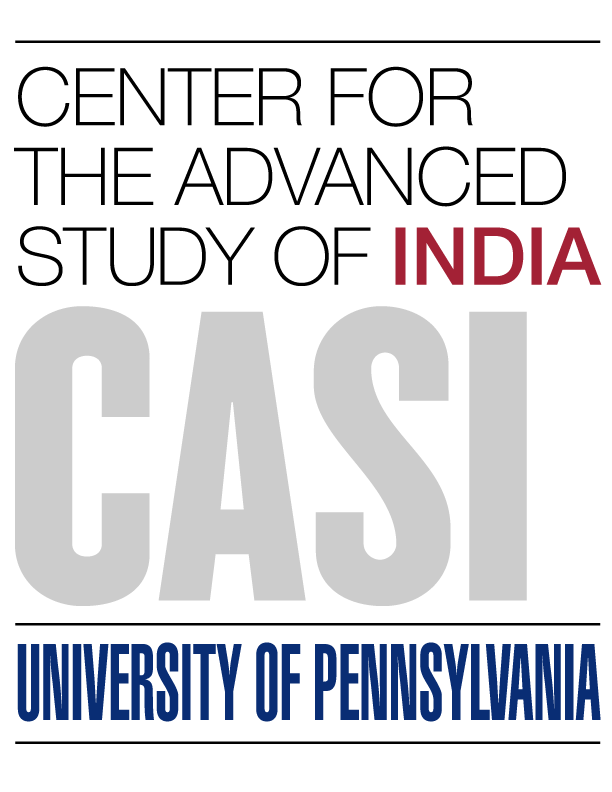
Elaborating on his country’s new plan for a Free and Open Indo-Pacific (FOIP) in New Delhi, Japanese Prime Minister Fumio Kishida declared that “to achieve this (plan), India is an indispensable partner.” His remarks, delivered during his visit in March, underscored India and Japan’s “extremely unique position” in the current global order and their “great responsibility” in maintaining and strengthening it. As members of the Quad, alongside Australia and the US, the two have further fostered their collective contributions within the wider Indo-Pacific region.
Japan is amongst India’s most prominent strategic partners today in terms of progress across security, economic development, and status—the three priorities of Indian foreign policy as espoused by the current government. If you consider leadership travel as a useful indicator, Japan was the country Indian Prime Minister Narendra Modi visited most during his first term (2014-19) with at least three more in his second—including the G-7 summit in Hiroshima in May.
Modi, like his predecessors, has built the India-Japan relationship through a set of nested strategic partnerships: bilateral (India–Japan), trilateral (India–Japan–US; India–Japan–Australia), and quadrilateral (India–Japan–US–Australia). By taking this comprehensive picture into account, one can understand why the partnership appears enduring today and is rated one of India’s most successful.
Issue-Based Networking, not Alliances
The India-Japan relationship and, by extension, the Quad cannot be examined without first understanding how India has pursued its interests within the post-Cold War international order. Key features defining India’s approach include, among others, the principle of strategic autonomy, the forging of strategic partnerships (not alliances) to secure this principle, and (going beyond self-help) creating a networking response to India’s clearest strategic challenge today—China.
Issue-based alignment, and not values-based association, underpin India’s strategic partnerships—prominent ones including the US, Russia, France, and Japan. This is not an unusual position to hold anymore in the current global context as reaffirmed by Kishida’s assertion in New Delhi that “we (Japan) do not impose values.” Ties are, consequently, based on interests (security, economic prosperity), position (shared region, geopolitical framework), membership of organizations (e.g. Quad, BRICS, SCO), and issue area (maritime, energy, climate). Partnerships become agile arrangements for policymakers and leadership alike, providing much-needed flexibility to navigate a world order in flux and their resulting networks reflect a strategy wherein bilateral, minilateral (e.g. trilateral, quadrilateral), and multilateral formats become interrelated force multipliers.
India’s networking response to its “China Challenge” incorporates such a network of overlapping strategic partnerships emphasizing both military and economic dimensions aimed at strengthening strategic deterrence against its neighbor and reducing dependence on the Chinese economy. India’s interactions with Japan form a key component of this network and, subsequently, of Indian grand strategy since the end of the Cold War.
Unpacking the India-Japan Partnership
Economic complementarity and shared apprehensions over China’s footprint in their neighborhoods drew India and Japan closer in the post-Cold War period. During the past decade, more specifically, Japan’s reframing of its national security posture away from pacifism and India’s rising profile in the Indo-Pacific region presented opportunities to both governments. The two have no major differences and yet kept a guarded distance from each other through the Cold War. India’s friendship with the Soviet Union, unease with the US, and its alliance system (including Japan), and its autarkic economic vision that contrasted with Tokyo’s export-oriented approach were key reasons for this position. This changed after the collapse of the Soviet Union with Indian Prime Minister P. V. Narasimha Rao pursuing India’s “Look East Policy” (1993) to engage the more successful Asian economies with the country facing a severe balance-of-payments crisis. Apart from a brief setback in 1998 over India’s nuclear tests (prompting Japanese criticism and sanctions), the trajectory remained positive and the relationship was elevated to a “special strategic and global partnership” by 2018 under Modi and Japanese Prime Minister Shinzo Abe.
Bilateral ties have registered visible growth in aspects of security, economic cooperation, and status for India. The systemic factor, primarily the sharp deterioration in Sino-Indian relations, pushed the Modi government closer to Japan. The clashes in Galwan amidst the pandemic in July 2020 ushered an unprecedented change in India’s calculus toward China. New Delhi moved quickly to strengthen strategic deterrence against Beijing by shoring up ties with friendly powers like Japan, which publicly declared its support by opposing “unilateral attempts to change the status quo.” Capacity building has been the focus of economic cooperation with FDI and lending for infrastructure development in India’s Northeast region through Japan’s Overseas Development Assistance (ODA) program topping the agenda.
Japan was the second country—the first being the US—with which India set up a 2+2 ministerial dialogue in 2019, creating a framework for the External Affairs and Defence ministers of both countries to meet annually. Additionally, joint military drills and training across the services, military-technical cooperation, including an agreement concerning the transfer of defense equipment and technology (2015), and shared logistical support (Acquisition and Cross-Servicing Agreement in 2020), all suggest a security agenda that is progressing rather rapidly. The Kishida government’s recent announcement to expand its ODA program with a new Overseas Security Assistance (OSA) scheme to enhance “security and deterrence capabilities” of partner countries would be welcome in India.
Japan’s support for India’s entry into prestigious “clubs” such as the Nuclear Suppliers Group (2008) and policy coordination at regional and Indo-Pacific institutions together advance non-material aspects of India’s status. Despite their recent differences over the Russian invasion of Ukraine (i.e. India’s hesitation to condemn Russia), shared concerns over China drive the India-Japan relationship and this is unlikely to change in the near future. Both sides, therefore, agree to disagree on some issues to preserve their bilateral progress—the benefits of which extend to their trilateral and quadrilateral networks.
Trilaterals and the Quad
For reasons ranging from the weakening of old alliances and the futility of large multilateral frameworks, states have found value in minilateral arrangements, which assist them in hedging, soft-balancing, or coordinating positions better with partner countries. India and Japan reinforce their existing alignment working with the US or with Australia within a trilateral setting, i.e. the India-Japan-US (from 2011) and India-Japan-Australia (from 2015) dialogues. Both began at a time when New Delhi’s worldview was one inclined to hedge its bets and not overtly antagonize Beijing. In terms of focus areas, for instance, the India-Japan-US trilateral aims to set up alternatives for regional economic capacity development while the India-Japan-Australia dialogue is addressing pandemic-induced disruptions to build supply chain resilience in the Indo-Pacific. The trilateral arrangements, therefore, are a stepping stone to the workings of the quadrilateral forum, i.e. the Quad, which brings added gains for India, Japan, Australia, and the US.
Since the Quad’s second innings, beginning in 2017, all four members have strongly converged around the idea of managing an assertive China that is undermining the “rules-based order.” Together, they have advocated a FOIP, decried Beijing’s predatory financing and debt practices, and are weaning their economies away from it. Though initially hesitant to directly antagonize China, India has not shied away since the Sino-Indian clashes in 2020 to signal its commitment to the forum and steer the Quad’s agenda to its interests. Coupled with the global effects of the pandemic, all four member states now have clearly articulated positions on China. The India-Australia partnership, once viewed as the grouping’s weakest link, has grown by “leaps and bounds” since 2020, with both sides doubling down on building economic complementarity. Australia has also joined the MALABAR naval exercises (between India, Japan, and the US) and drills were held off its coast for the first time this year, expanding military interoperability between the Quad navies. The strengthening of the bilateral partnership, subsequently, brings with it benefits for the larger grouping, enhancing its overall functioning.
The Quad is, however, no Asian NATO and that may be its greatest strength. It is a loose-knit network of like-minded partners working together toward a broader objective. Their conversations appear to focus on non-military initiatives, but if we look closely at their existing bilateral and trilateral mechanisms, the four members have established the basis for regular defense cooperation, intelligence-sharing, and logistics support. At the same time, the quadrilateral framework also has non-material, ideational elements at its core, evolving from a “democratic diamond,” as vocalized by Abe in 2012 to the promotion of the FOIP strategy. Such ideational connectivity fulfils India’s status-seeking ambitions, central to New Delhi’s vision of being a “net security provider” through a networking response wherein the India-Japan partnership has a formative role.
As Kishida remarked, New Delhi has certainly become an “indispensable” partner as per Tokyo’s calculations. On Japan’s part, its 2022 National Security Strategy notes cooperation with India as crucial toward developing “a multi-layered network among its ally and like-minded countries,” reflecting its own network-based response to the shifting global order. With no direct issues of conflict on the horizon, the prognosis for the India-Japan partnership remains optimistic.
Sumitha Narayanan Kutty is a Leverhulme Doctoral Fellow at the Centre for Grand Strategy within the Department of War Studies, King’s College London and an Adjunct Research Associate at RSIS Singapore. She is co-author of the International Politics article Modi’s India and Japan: Nested Strategic Partnerships and co-editor of India and Japan: Assessing the Strategic Partnership (with Rajesh Basrur).
This article is the third in a four-part IiT series focused on India in the Quad, the geopolitical grouping that also includes Japan, Australia, and the US, whose leaders met at the annual Quad Summit in Hiroshima in May 2023. As India's perception of the China challenge continues to evolve, its approach toward the Quad—which has expanded in ambition and activity since the COVID-19 crisis, the 2020 Indo-China clash in Ladakh, and amid growing Sino-US tensions—calls for additional scholarly scrutiny. The first piece, by Kate Sullivan de Estrada, looked at India's leveraging of a "low-resolution" liberal order in the Indo-Pacific. The second, by Aditi Malhotra, looked at Shades of Grey between India, the US, and the Quad.
(IiT Consulting Editor: Rohan Venkat, writer, India Inside Out; Editorial Consultant, Centre for Policy Research)
India in Transition (IiT) is published by the Center for the Advanced Study of India (CASI) of the University of Pennsylvania. All viewpoints, positions, and conclusions expressed in IiT are solely those of the author(s) and not specifically those of CASI.
© 2023 Center for the Advanced Study of India and the Trustees of the University of Pennsylvania. All rights reserved.

